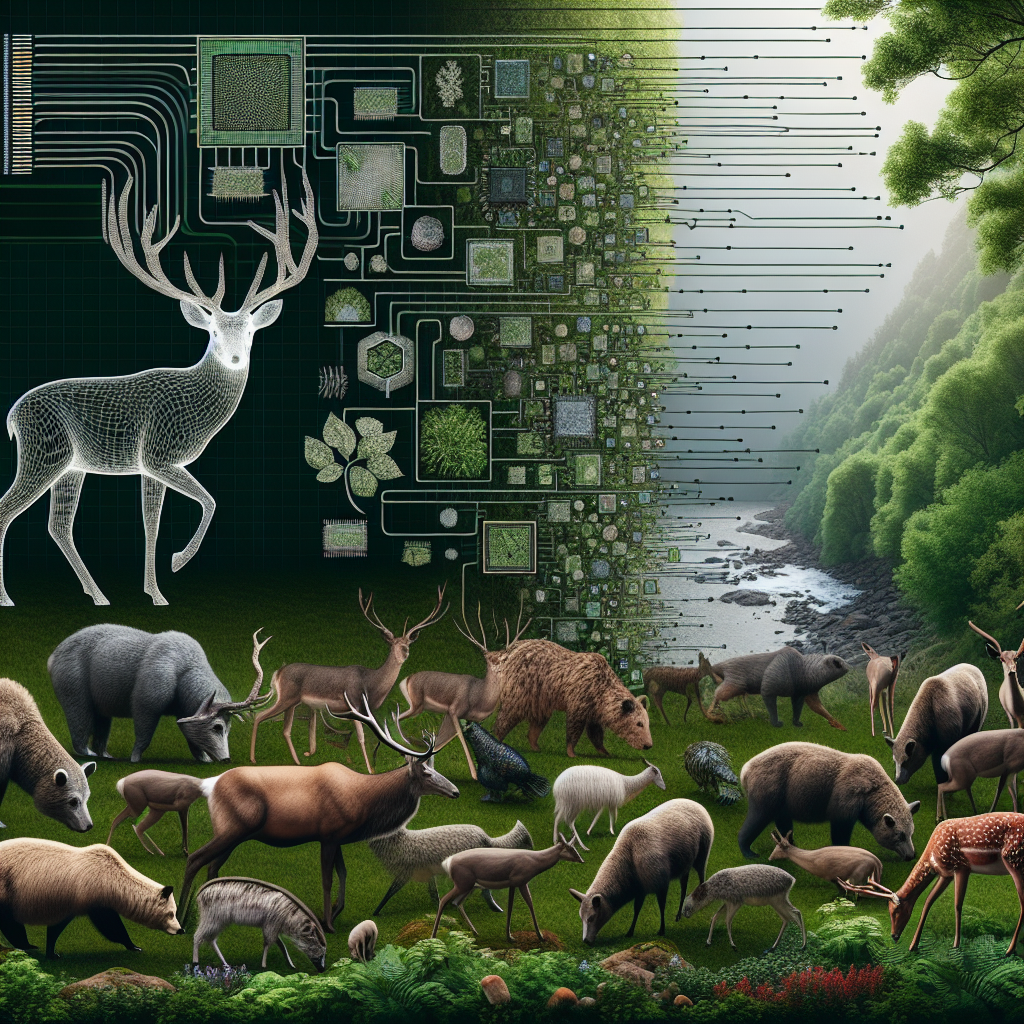In recent years, artificial intelligence (AI) has been increasingly harnessed for various applications, including wildlife conservation efforts. The integration of AI into conservation strategies has proven to be a game-changer, providing numerous benefits that can help protect and preserve endangered species and their habitats. From monitoring animal populations to analyzing data and predicting trends, AI has the potential to revolutionize wildlife conservation efforts for the better.
One of the key benefits of integrating AI into wildlife conservation efforts is its ability to enhance monitoring and surveillance capabilities. Traditional methods of monitoring wildlife populations, such as camera traps and field surveys, can be time-consuming, labor-intensive, and costly. AI-powered tools, such as drones equipped with thermal imaging cameras, can cover large areas of land in a fraction of the time it would take human researchers to do so. These tools can also analyze large amounts of data quickly and accurately, providing valuable insights into animal behavior, population trends, and habitat health.
AI can also help conservationists identify and track individual animals, which is crucial for understanding population dynamics and implementing targeted conservation strategies. For example, AI-powered facial recognition technology has been used to identify individual animals, such as elephants and tigers, based on unique patterns in their markings or features. This can help researchers keep track of individual animals over time, monitor their movements, and assess their health and well-being.
Another benefit of AI integration in wildlife conservation efforts is its ability to analyze data and predict trends. AI algorithms can process vast amounts of data from various sources, such as satellite imagery, weather patterns, and animal tracking data, to identify patterns and trends that may not be immediately apparent to human researchers. This can help conservationists predict threats to wildlife populations, such as poaching or habitat loss, and develop proactive strategies to address these threats before they escalate.
Furthermore, AI can help conservationists optimize resource allocation and decision-making. By analyzing data on animal movements, habitat preferences, and population dynamics, AI algorithms can help conservationists identify priority areas for conservation efforts, such as key habitats for endangered species or corridors for wildlife migration. This can help conservation organizations allocate resources more effectively and make informed decisions about where to focus their efforts for maximum impact.
In addition, AI can help conservationists engage with the public and raise awareness about wildlife conservation issues. By using AI-powered tools, such as virtual reality experiences or interactive apps, conservation organizations can educate the public about the importance of protecting wildlife and inspire them to take action. This can help build support for conservation efforts and encourage individuals to get involved in conservation initiatives, such as volunteering or donating to conservation organizations.
Overall, the integration of AI into wildlife conservation efforts has the potential to revolutionize the way we protect and preserve endangered species and their habitats. By enhancing monitoring and surveillance capabilities, analyzing data and predicting trends, optimizing resource allocation, and engaging with the public, AI can help conservationists make more informed decisions and implement more effective conservation strategies. With the power of AI on their side, conservationists can work towards a future where wildlife thrives in their natural habitats and biodiversity is preserved for future generations.
FAQs:
Q: How does AI help in monitoring wildlife populations?
A: AI-powered tools, such as drones equipped with thermal imaging cameras, can cover large areas of land quickly and accurately, providing valuable insights into animal behavior, population trends, and habitat health.
Q: Can AI help conservationists track individual animals?
A: Yes, AI-powered facial recognition technology has been used to identify individual animals based on unique patterns in their markings or features, helping researchers keep track of individual animals over time and monitor their movements.
Q: How can AI help conservationists predict threats to wildlife populations?
A: By analyzing data from various sources, such as satellite imagery and animal tracking data, AI algorithms can identify patterns and trends that may indicate threats to wildlife populations, such as poaching or habitat loss, allowing conservationists to develop proactive strategies to address these threats.
Q: How can AI help conservationists engage with the public?
A: AI-powered tools, such as virtual reality experiences or interactive apps, can help conservation organizations educate the public about wildlife conservation issues and inspire them to take action, building support for conservation efforts and encouraging individuals to get involved.

